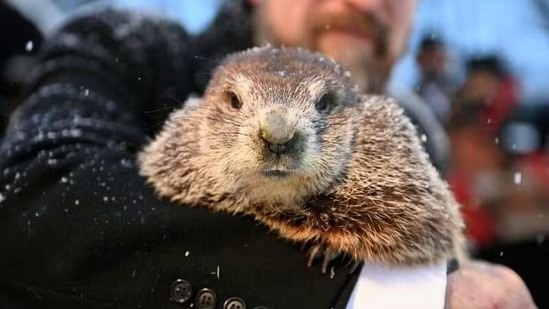As winter reaches its halfway point, the focus of millions of Americans is drawn to a particular tradition annually.
When is Groundhog Day 2024?
Every year on February 2nd, a peculiar tradition takes center stage in the United States and Canada. Groundhog Day, marked by the emergence of a furry meteorologist, is a quirky celebration that captures the essence of winter’s end. Let’s delve into the history, festivities, and the meteorological mystique that surrounds this unique occasion.
Origins of Groundhog Day
Groundhog Day traces its roots back to ancient European traditions, particularly Candlemas Day. Celebrated midway between the winter solstice and the spring equinox, Candlemas marked the midpoint of winter. Germans, who settled in Pennsylvania, brought their tradition of predicting the weather based on an animal’s behavior.

Punxsutawney Phil: The Prognosticating Prodigy
The star of the show is Punxsutawney Phil, a groundhog with the title of Chief Meteorologist. According to folklore, if Phil sees his shadow upon emerging from his burrow, there will be six more weeks of winter. If not, an early spring is predicted. Phil has been making his annual prediction in Punxsutawney, Pennsylvania, since the first official Groundhog Day in 1887.
The Festivities during Groundhog Day
Groundhog Day is more than just a weather prediction; it’s a lively celebration. Thousands gather in Punxsutawney to witness Phil’s forecast. The festivities include parades, music, food, and a palpable sense of camaraderie. The atmosphere is charged with excitement as people eagerly await Phil’s appearance.

Groundhog Day has become ingrained in popular culture, thanks in part to the 1993 film, “Groundhog Day,” starring Bill Murray. The movie, directed by Harold Ramis, has achieved cult status and continues to resonate with audiences, contributing to the enduring appeal of the tradition.
The Science Behind the Shadow
While the folklore adds a touch of whimsy to the event, the science behind the shadow prediction is straightforward. If it’s a sunny day and Phil sees his shadow, it means the sun is casting a shadow, indicating clear weather. If it’s cloudy and he doesn’t see his shadow, it suggests an overcast sky and the possibility of precipitation.
Critics argue that Phil’s predictions are no more accurate than random chance. Meteorologists rely on advanced technology and scientific methods to forecast the weather, making the groundhog’s prediction more of a fun tradition than a reliable weather forecast.
Variations Across the Continent and Around the World
While Punxsutawney Phil is the most famous groundhog, other regions have their own furry forecasters. Staten Island Chuck in New York, Wiarton Willie in Canada, and General Beauregard Lee in Georgia all play their part in this unique meteorological tradition.

The fascination with predicting the arrival of spring isn’t exclusive to North America. Similar traditions exist in different parts of the world, each with its own cultural variations. From Germany’s badger predictions to Serbia’s bear prognostications, the theme of using animals to foresee seasonal changes is a global phenomenon.
Groundhog Day has evolved from a quaint Pennsylvania tradition to a widely recognized cultural phenomenon. Beyond the shadow prediction, the day serves as a reminder that, despite technological advances, people still find joy in embracing quirky traditions that connect them to nature and community.
Groundhog Day, with its roots in ancient traditions and a dash of modern charm, continues to captivate and amuse. Whether it’s the thrill of Phil’s prediction, the festivities in Punxsutawney, or the enduring impact of the film, this quirky celebration has found a special place in the hearts of many. As we eagerly await Punxsutawney Phil’s emergence each February, we embrace the whimsy and unpredictability that Groundhog Day brings, reveling in the magic of folklore and the enduring spirit of community celebration.


